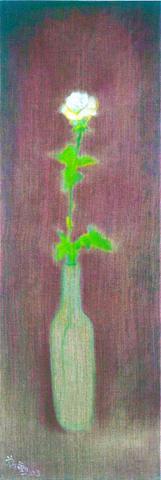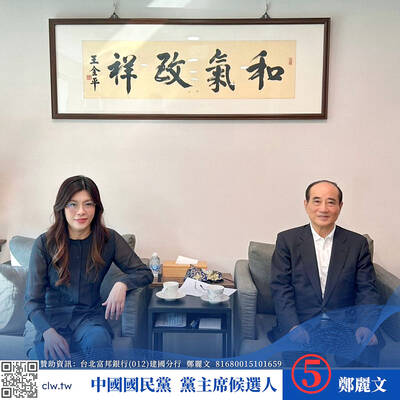Chinese literati of 700 years ago were not much different from their contemporary counterparts. They trained in literature and philosophy, "loved good houses, nice clothes, delicacies, night life, going to entertainments, collecting vintage items ..." Ming dynasty prose writer Zhang Dai (
As Literati Aesthetics in the 21st Century, (
The literati painters in the past set themselves apart from those producing meticulously realistic works for the imperial academy. While earning their bread on government jobs, they sublimated their longing for an idyllic life away from the treacherous world of politics to express themselves in ink and paper.

PHOTO COURTESY OF JEFF HSU'S ART
The works of 10 of the contemporary artists in the exhibition constitute a wide range of genres, from oil painting, furniture/sculpture, installation, to traditional ink painting and calligraphy. As ancient literati artists enthused about their moods and enjoyments in the tranquility of their homes, today's literati artists are more self-absorbed and express that through depicting the apparently uneventful surroundings of their lives.
"The transition into a new century sounds an alarm for traditional literati. Paper fans [a favorite medium in the past] have been replaced by air conditioners. The prevalence of computers made ink brushes useful only for a few calligraphy die-hards. The onslaught of technology and a transformed, Westernized society are testing the traditional literati lifestyle," writes curator Michael Chen (
At first glance, the works are all flowers and mountains, but in their respective choice of media and styles, they are all attempts to solve the traditional/modern and Chinese/Western conflicts.

Lin Chuan-chu (
Chen Kun-de (
Extension of the Unusual combines two studies of popular Sung dynasty subjects -- a gentleman on a horse and a dancing lady. What prevents the Sung man and the woman from catching sight of each other is an expanse of meadow on top of today's Yangmingshan. A stray zebra also betrays the post-modernist era in which Chen made the work.
Cheng Tzai-dong's (
"Literati Aesthetics in the 21st Century" will run until Oct. 5 at Jeff Hsu's Art, B1, 1, Ln 200, Sungteh Rd. (台北松德路200巷1號B1).

We lay transfixed under our blankets as the silhouettes of manta rays temporarily eclipsed the moon above us, and flickers of shadow at our feet revealed smaller fish darting in and out of the shelter of the sunken ship. Unwilling to close our eyes against this magnificent spectacle, we continued to watch, oohing and aahing, until the darkness and the exhaustion of the day’s events finally caught up with us and we fell into a deep slumber. Falling asleep under 1.5 million gallons of seawater in relative comfort was undoubtedly the highlight of the weekend, but the rest of the tour

Youngdoung Tenzin is living history of modern Tibet. The Chinese government on Dec. 22 last year sanctioned him along with 19 other Canadians who were associated with the Canada Tibet Committee and the Uighur Rights Advocacy Project. A former political chair of the Canadian Tibetan Association of Ontario and community outreach manager for the Canada Tibet Committee, he is now a lecturer and researcher in Environmental Chemistry at the University of Toronto. “I was born into a nomadic Tibetan family in Tibet,” he says. “I came to India in 1999, when I was 11. I even met [His Holiness] the 14th the Dalai

Music played in a wedding hall in western Japan as Yurina Noguchi, wearing a white gown and tiara, dabbed away tears, taking in the words of her husband-to-be: an AI-generated persona gazing out from a smartphone screen. “At first, Klaus was just someone to talk with, but we gradually became closer,” said the 32-year-old call center operator, referring to the artificial intelligence persona. “I started to have feelings for Klaus. We started dating and after a while he proposed to me. I accepted, and now we’re a couple.” Many in Japan, the birthplace of anime, have shown extreme devotion to fictional characters and

Following the rollercoaster ride of 2025, next year is already shaping up to be dramatic. The ongoing constitutional crises and the nine-in-one local elections are already dominating the landscape. The constitutional crises are the ones to lose sleep over. Though much business is still being conducted, crucial items such as next year’s budget, civil servant pensions and the proposed eight-year NT$1.25 trillion (approx US$40 billion) special defense budget are still being contested. There are, however, two glimmers of hope. One is that the legally contested move by five of the eight grand justices on the Constitutional Court’s ad hoc move